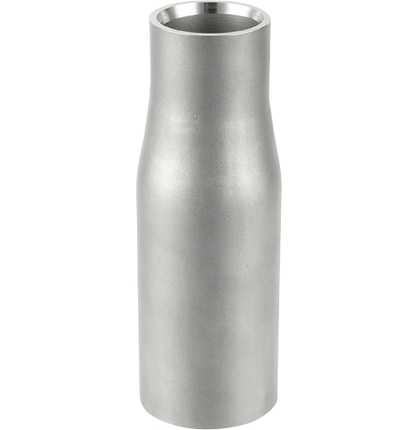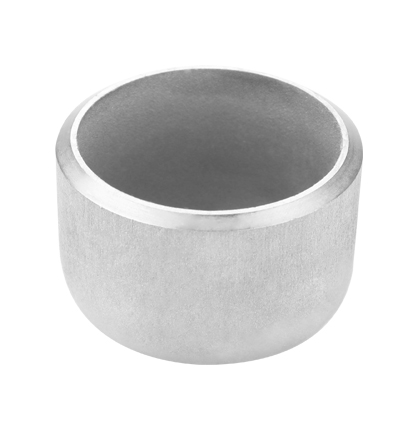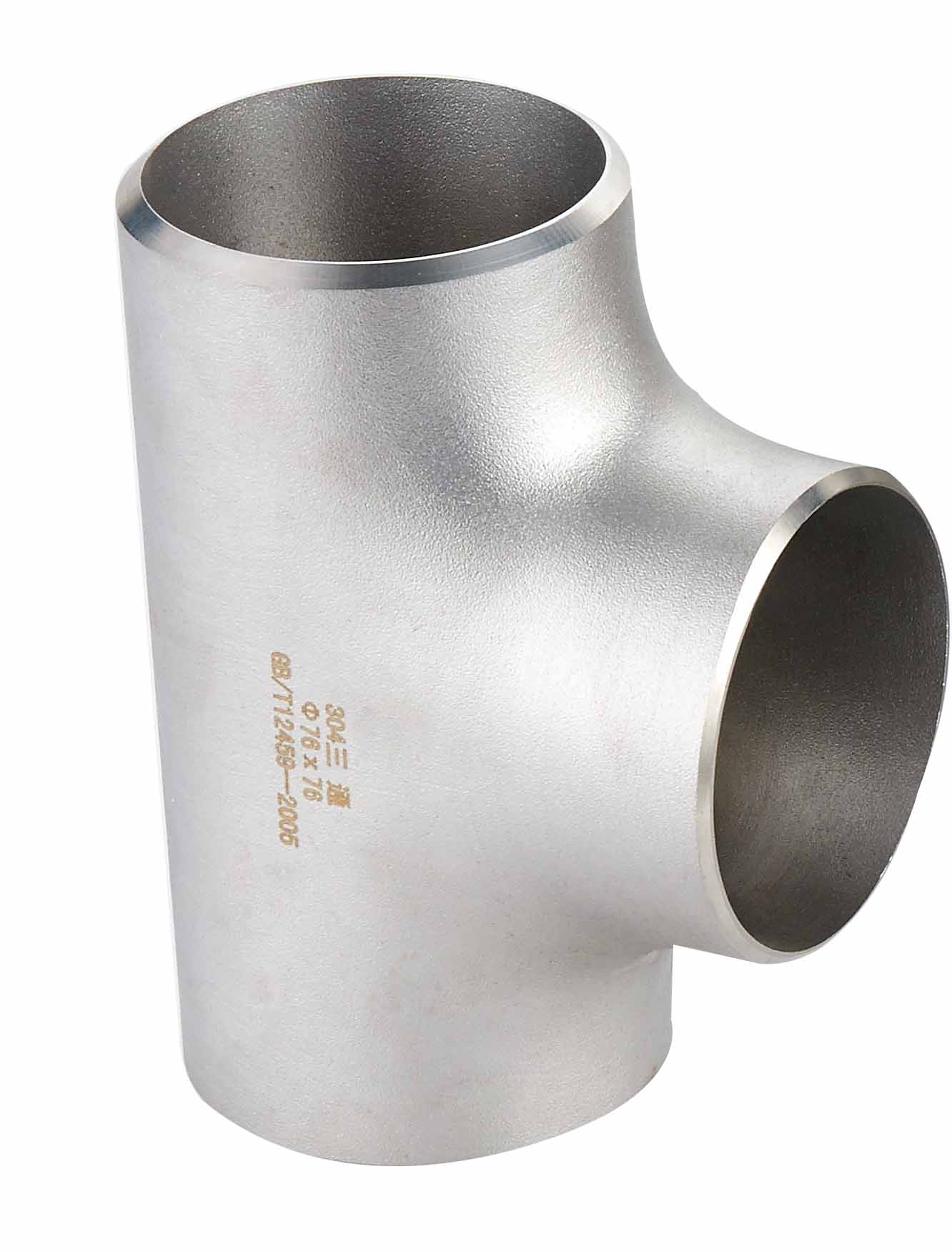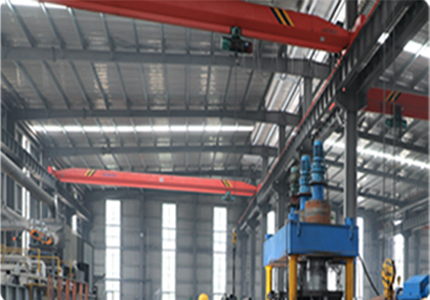

Big and small head, also known as reducing pipe, is one of the chemical pipe fittings, mainly used to connect two different pipe diameters. There are two types of heads: concentric heads and eccentric heads. Concentric head refers to the heads whose centers are on the same straight line, while eccentric head refers to the heads whose centers are not on the same straight line. 12
Materials and standards
The materials of the heads include carbon steel, stainless steel, and alloy steel. Its quality should comply with current national standards such as GB/T 12459-2005 for seamless welded steel fittings. In addition, the size of the head can also be produced according to different standards, such as national standards, American standards, British standards, etc.
Application scenarios
Da Xiao Tou is widely used in industries such as oil and gas pipeline engineering, chemical plants, power plants, shipyards, pharmaceuticals, dairy products, beer, and beverages. Its functions include changing the flow rate, installing pipelines on walls or floors to save space, etc.
manufacturing process
The manufacturing process of small and large heads includes reduced diameter pressing, expanded diameter pressing, or reduced diameter plus expanded diameter pressing. For certain specifications of reducers, stamping forming can also be used.



On November 13, 2024, the financial sector reported that the China National Intellectual Property Administration information showed that Xiamen Yiying Electronic Technology Co., Ltd. applied for a patent entitled "a lens cap and its manufacturing method", with the publication number of CN 118930073 A and the application date of July 2024.
The patent abstract shows that the present invention provides a lens cap and its manufacturing method, wherein the manufacturing method comprises providing solder with a thickness corresponding to the flatness information of the cap opening based on the flatness information of the cap; Fixing the solder on the lens to form an integral structure; Determine the crimping position of the pipe cap opening based on the alignment conditions; Crimping the solder of the overall structure with the crimping position to produce a lens tube cap, replacing the adhesive in existing technology with the solder, not only ensures stable and reliable structure, but also ensures precise control of the amount and position of solder during welding, and improves production efficiency.
This article originates from the financial industry



The connection methods between cast iron tees and pipelines include direct welding (commonly used) flange connection, threaded connection, and socket connection. Commonly used pipe fittings in pipeline installation, used to connect the outside of bent pipes. Cast iron tee materials include cast iron, stainless steel, alloy steel, malleable cast iron, carbon steel, etc. 1. Classification of cast iron tees 1. Classification of cast iron tees: reducing tees, Y-shaped tees, high-pressure tees, etc. 1. Material classification: carbon steel, cast steel, alloy steel, stainless steel, copper, aluminum alloy, etc. Cast iron tee technology is a pipe fitting used for pipeline branching. At present, the commonly used processes for manufacturing cast iron with seamless steel pipes include hydraulic bulging and hot pressing forming.
The process of hydraulic bulging involves injecting liquid into a billet with the same diameter as a cast iron tee using a dedicated hydraulic press. The pipe blank is simultaneously squeezed by two horizontal oil cylinders of the hydraulic press. After extrusion, the volume of the billet decreases, and the liquid pressure inside the billet increases as the volume of the billet decreases. When the pressure required for the expansion of the cast iron three-way branch pipe is reached, the liquid in the side cylinder and pipe blank is made of metal material under the dual action of pressure, and the branch pipe flows and expands along the inner cavity of the mold. One time hydraulic bulging of cast iron tees results in high production efficiency, increasing the wall thickness of the main pipe and the shoulder wall thickness of the cast iron tees.
Due to the large equipment tonnage required for the seamless cast iron tee hydraulic bulging process, it is currently mainly used in the manufacturing of standard wall thickness cast iron tees below DN400 in China. The applicable forming materials include low-carbon steel, low-alloy steel, and stainless steel with low cold work hardening, including non-ferrous metal materials such as copper, aluminum, titanium, etc.
The hot pressing forming of cast iron tees is to flatten a billet larger than the diameter of the cast iron tee to the size of the cast iron tee diameter, and open a hole at the position of the drawn branch pipe. After heating, the billet is placed into a forming mold, and the mold for drawing the branch pipe is installed on the billet; Under pressure, the pipe blank is radially compressed. The entire process is composed of radial compression of the pipe blank and pulling of the branch pipe. Unlike hydraulic bulging cast iron tees, the metal of hot pressed cast iron tees is compensated through the radial movement of the billet, hence it is also known as the radial compensation process.
Due to the use of pressed cast iron tees after heating, the equipment tonnage required for material forming is reduced. Hot pressed cast iron tees have wide material adaptability and are suitable for low carbon steel, alloy steel, and stainless steel materials; Especially for large-diameter thick walled cast iron tees, this forming process is usually used.
The process of connecting cast iron tees is also the same. There is a mold with a straight bottom and flange holes on top. After inserting the pipeline, fix it with a hydraulic cylinder, fill both sides with liquid, and expand inward. Squeeze the tube into a "convex" shape, then remove the protruding part from the appropriate position and punch it into the groove. It must be shot twice. Due to work hardening during the processing, heat treatment is also required, which is the production process of cast iron tee fittings.



The rubber lining head is an important component that plays a connecting role in pipeline systems, and its design and manufacturing process have a significant impact on the performance and safety of pipeline systems. The following is the relevant information on the design and manufacturing process analysis of the rubber lining head:
Design principle: The design of the rubber lining head needs to consider multiple factors, such as pipeline material, working temperature and pressure, medium properties, etc. When designing, it is necessary to follow some basic principles, such as minimizing pipeline resistance, reducing pipeline pressure loss, ensuring the reliability and sealing of pipeline connections, etc.
Material selection: The material selection for the lining rubber head needs to consider factors such as corrosion resistance, high temperature resistance, wear resistance, and strength. Usually, the main types of rubber lining heads include concentric heads, eccentric heads, etc. Among them, the material of the inner lining rubber is usually natural wear-resistant rubber, butyl rubber, low calcium magnesium rubber, chloroprene rubber, etc.
Manufacturing process: The manufacturing process of lining rubber heads usually includes stamping, butt welding, rolling and other processes, among which rolling process is the most commonly used process. The manufacturing of rubber lining heads requires strengthened quality control to ensure their dimensional accuracy and surface smoothness.
Size design: The size design of the rubber lining head needs to consider factors such as the diameter, wall thickness, pressure, and temperature of the pipeline. When designing, it is necessary to follow relevant standards and specifications, such as ASME B16.5, GB/T 9119, and other standards.
Performance testing: The performance testing of rubber lining heads usually includes sealing testing, pressure testing, corrosion resistance testing, etc. The purpose of the test is to ensure the connection performance and service life of the rubber lining head.
In summary, the design and manufacturing process of rubber lining heads have a significant impact on the performance and safety of pipeline systems. When designing and manufacturing, multiple factors need to be considered to strengthen quality control and testing, in order to ensure the connection performance and service life of the rubber lining head.


